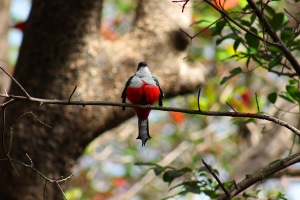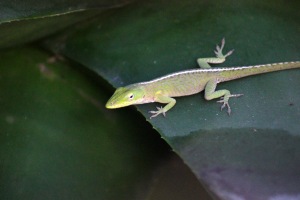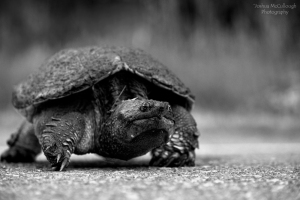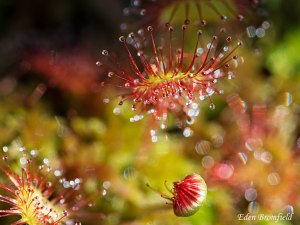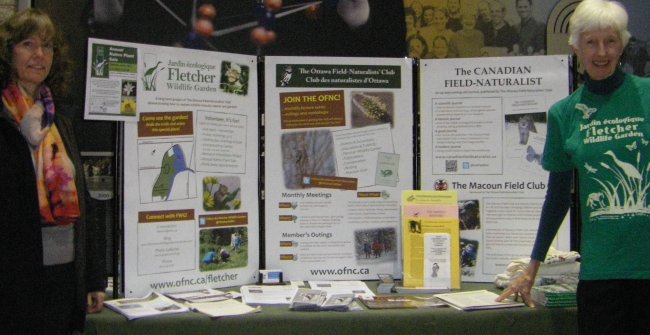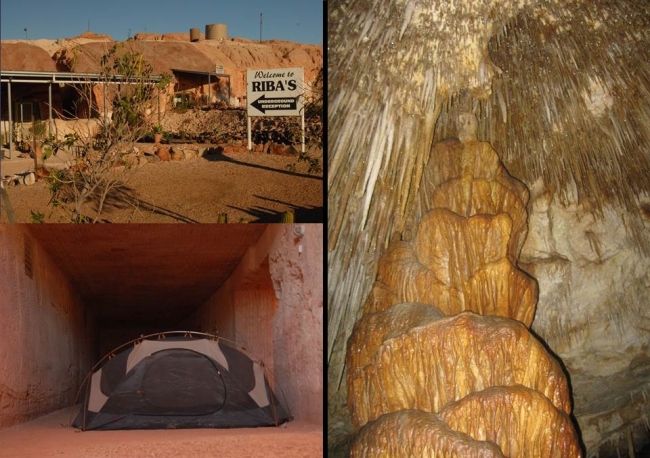Tagged: wildlife
Wildlife on vacation – an all inclusive look at Cuba
By Bailey Cooke
Bailey Cooke is a 2nd-year University of Ottawa student in biology and geology. This winter, Bailey is volunteering with the OFNC through the Community Service Learning program.
Tuesday, February 10, the Ottawa Field-Naturalists’ Club held their first monthly meeting of 2015 at the Central Experimental Farm’s Neatby Building, situated at 960 Carling Avenue. After a short social, the meeting kicked off with a poem read by OFNC’s long-time member and resident poet Murray Citron. The fantasia-themed poem, inspired by the line “if a flute could be a flower, it would be a trillium” set the tone for what turned out to be a delightful evening.
Jakob Mueller presented the main talk of the night. Jakob is a member of the OFNC’s Events Committee and has previously led several club excursions, such as turtle watching at Petrie Island and a winter birding trip to Amherst Island. He will also be leading the club’s Snowshoeing in Stony Swamp excursion on Saturday, February 28 at 10 a.m.
Jakob has visited Cuba three times and has taken a keen interest in the island’s wondrous wildlife. Most people know Cuba for its warm weather, picturesque beaches, and enticing culture. Many can’t help but also notice the breathtaking countryside throughout the island. As Jakob pointed out in his presentation, naturalists see beyond the countryside: they see the many living things inhabiting it. Jakob took us on a voyage that gave us a sneak peak at the diverse wildlife the island has to offer.
Birds, reptiles, butterflies, insects, amphibians, and much more – Jakob showcased a wide variety of fauna and flora through a picture presentation while providing the audience with brief insights on the organisms he captured on film. He told us of the Greater Antillean Grackle whose melodious chirping is intriguingly coupled with rolling its eyes to the back of its head. Jakob also talked about the Black-throated Blue Warbler with whom he played peek-a-boo as he tried to get a picture.
One of the most curious stories came from Jakob’s last days in Cuba on his most recent trip. Despite having encountered numerous creatures throughout his stay, Jakob explained how he had yet to spot an indigenous lizard he had been longing to find: the Cuban green anole. What was so interesting about the story was what Jakob witnessed after coming across the lizard on his last day. He described an especially fascinating feature of this creature: when tense, the anole folds the skin on its back into a crest.
Some other sightings made by Jakob included:
Birds: Greater Antillean Grackle, Cuban Blackbird, Tawny-shouldered Blackbird, Northern Mockingbird, Turkey Vulture, Palm Warbler, Black-throated Blue Warbler, Cuban Emerald Hummingbird, Common Ground-Dove, Brown Pelican
Butterflies: Mangrove Buckeye, Great Southern White, Zebra Heliconian
Amphibians/reptiles: Brown Anole, Cuban Tree Frog, Curly-tailed Lizard, Cuban Iguana
Jakob made it quite clear that Cuba has a vast variety of wildlife, and any naturalist would revel in the opportunity to come face to face with it. He plans to return to Cuba again in the near future. The only question that remains is what unnoticed wildlife lurks throughout the island awaiting to be discovered?
Second annual OFNC members’ photo night
By Claire Elliott and Barry Cottam
On Saturday evening, January 17, Barry Cottam and Hume Douglas hosted the second annual OFNC Member’s Photo Night. To accommodate the growing popularity of this event, the meeting was held at the Central Experimental Farm’s Neatby Building, the location of the OFNC monthly meetings.
Fourteen club photographers presented to a group of a couple of dozen onlookers. The emergent theme of the night seemed to be naturalists on vacation, as there were many wonderful photos from all over North America. However, the natural history of the Ottawa region was also well represented.
Starting in the south, Hugh Metcalfe introduced us to the many birds he encountered during his work as a bird surveyor in Florida and Mississippi. Suzanne Deschệnes also showed pictures from this region, all from 25 of Florida’s 27 National Wildlife Refuges. The first butterfly presentation of the night came from Gillian Marston, who visited Mission, Texas, for the Butterfly Festival held during fall butterfly migration. Heading east, Barry Cottam introduced us to the many wonderful insects of rural eastern Prince Edward Island.
Traveling west across the continent, our resident butterfly expert Rick Cavasin (see Butterflies of Ontario) took us on a second butterfly tour of Idaho, Colorado, Nevada, and Wyoming, while Gordon Belyea presented his lifer birds from a trip to Arizona and New Mexico. From Vancouver we saw beautiful western trees with Lorne Peterson. And in the north, Eden Bromfield combined scenes of the beauty of ice and snow with his interest in rare flora, and Claire Elliott exhibited an inventory of the flora and fauna of the Barrenlands in the Northwest Territories.
The photos taken in the Ottawa region showed the amazing diversity of our local natural history. The first presenter of the night, Dale Poulter, captured our attention with a wonderful display of caterpillar diversity, seen around her home in Perth. Victor Rakmil then presented a series of portraits entitled “Animals with Attitude.” Local flora were well represented by Brian Carson and his study on Trillium colour variants and by Josh McCullough’s artistic macro and landscape shots. Lastly, Diane Lepage, who was recently featured in a member profile, took us on a broad tour of our local fauna, focusing on insects she’d never seen before.
Thanks to Barry and Hume for organizing this event for a second year, to all of the photographers for sharing their beautiful photos, and to the audience for giving their support. We look forward to the 2016 photo night!
Wildlife in Sri Lanka
By Jessica Sutton
Jessica Sutton is a 2nd-year University of Ottawa student in Environmental Studies and Biology. This fall, Jessica is volunteering with the OFNC through the Community Service Learning (CSL) program.
On a rainy night late last month, Jeewa Mendis treated us to the videos and photos she took during a 2-month trip to Sri Lanka last winter with her husband. Her videos, accompanied by beautiful Sri Lankan music, showcased the wildlife inhabiting Sri Lankan National Parks and Reserves. Their tours of most parks were made in the jeep of a guide, a requirement to protect visitors from the wildlife. Being confined to a jeep was no obstacle to capturing beautiful images and dramatic footage of creatures great and small.
Sri Lanka is one of the smallest, yet most biologically diverse countries in Asia – 1 of 25 biological hotspots around the world. Sri Lanka has numerous endemic species. Of the 111 freshwater fish species, 95 are endemic. There are 94 species of mammals, 24 of which are endemic – and the list goes on! There are also many migratory species that winter on Sri Lanka, an island only 22 miles southeast from the coast of India.
Sri Lankan terrestrial ecosystems are largely wet evergreen, dry thorn forests, wetlands, grasslands and rivers. The coastal ecosystems consist of sea-grass beds and coral reefs, lagoons, and swamps. The country has shown extreme resilience in terms of ecological preservation. Today, the Sri Lankan Department of Wildlife has declared 13% of the land (8500km2) as protected area in the form of National Parks and Reserves.
Mihintale Wildlife Sanctuary
Established in the 3rd century BC, this was the first wildlife sanctuary in the ancient world. When the Sri Lankan king became a Buddhist, he declared the 999.6 hectares of land to be protected area.
Wildlife featured in this video included:
Birds: White-breasted Kingfisher, Common Iora
Butterflies: Tawny coaster, Common sailor, Danaid eggfly
Primates: Toque macaque (an endemic species), Dry-zone purple-faced langur
Mammals: Grizzled giant squirrel
Wilpattuwa National Park
Initially a sanctuary in 1905, the 131 693 hectares of land was established as a National Park in 1938. It is the largest and oldest National Park in Sri Lanka. Unfortunately, it has opened and closed several times throughout the years for reasons spanning from natural disasters to those political in nature. Despite this, the park has maintained 31 species of mammals and 137 species of birds (3 endemic and 23 winter migratory).
Several birds were featured in this video including:
Woolly-necked Stork, Rose-ringed Parakeet, Grey-headed fish eagle, Oriental Darter, Black-capped Kingfisher, Black-tailed Godwit (migrant), Marsh Sandpiper, Painted Stork, Common Emerald Dove, Grey Heron, Common ringed plover (migrant), Blue-tailed and Chestnut-headed bee-eaters, Sri Lankan jungle fowl (endemic, Sri Lankan national bird)



Mugger crocodiles and soft-shelled turtles were also shown in the video. A mother elephant and her baby were also featured – the mother showed signs of a healed bullet wound on her side, evidence that elephant poaching is still a very real problem. Jeewa also captured footage of the endangered Sri Lankan leopard hunting its prey – the barking deer.
Horton Plains National Park
In 1969, this area was established as a Reserve, and in 1988 was declared a National Park. Between 1831 and 1948, prior to becoming a protected area, an estimated 12-14 000 elephants disappeared due to hunting. In fact, it is believed that during this time, one army Major killed 1500 elephants alone. Many others were shot for sport.
Several endemic species were featured in this video:
Birds: Dull-blue flycatcher, Orange-billed babbler, Sri Lanka white-eye
Primates: Montane purple-faced langur



Horton Plains is the only National Park in Sri Lanka where you are allowed to walk. Jeewa’s video “Eagles in Flight” begins with a few seconds of a Crested Serpent eagle, then a Black eagle soaring over the hills at Horton Plains National Park, and then a brahminy kite (or Red-backed sea-eagle).
Adam’s Peak Wilderness Sanctuary
This sanctuary was established in 1940, and has since become a UNESCO World Heritage Site. Adam’s Peak is a religious place for Muslims, Christians, and Buddhists alike. Located 2243 m above sea level, the area is home to a wide range of species, many of which are endemic. In fact, 21 of the 91 bird species are endemic, and 5 of the 13 species of mammals found on the site are, too.
Yala National Park
The area that is now Yala National Park was established as a wildlife sanctuary in 1900, and upgraded to a National Park in 1938. The land is over 97 880 hectares large, and was once a hunting ground for elite individuals while Sri Lanka was under British rule. In 2004, a tsunami damaged a great portion of land that is still recovering. A combination of these factors has made Yala National Park one of the most strictly managed nature reserves. The park is divided into five blocks, of which two are open to the public and one is solely dedicated to research.
The video from this national park was filmed in late January/ early February. Despite the fact that it was winter in Sri Lanka, the diversity was immense!
Featured in this video were:
Birds: Barn Swallows, Small Minivit, Painted Stork, Indian Pitta (migrant), Crested Serpent Eagle, Common Kingfisher, Malabar Pied Hornbill
Mammals: black-naped hare, jackals, wild buffalo, elephants, leopards (Yala has the highest population of leopards in the world)
Along with the wild buffalo, elephants with young are considered the most dangerous animals in Yala. When mother elephants feel threatened, they flap their ears and stomp their feet in the sand. Footage included a mother elephant approaching a tour jeep while flapping her ears – the video ended before anything too dramatic took place!



If you are interested in seeing some of the scenery and wildlife in Sri Lanka, check out Jeewa’s YouTube channel: Greenbunting.
Showing up at City Hall
by Lynn Ovenden
Backyard Biodiversity was the theme last Friday night (April 11) at City Hall. As part of the City of Ottawa Wildlife Speaker Series, the evening featured talks by two guest speakers. Sarah Kirkpatrick-Wahl from Nature Canada spoke about features that make a garden attractive to wildlife. Bill Dowd, CEO of Skedaddle Humane Wildlife Control, demonstrated how numerous mammals gain entry to our homes and how they can be persuaded to take their babies outside, and stay outside.
Over 100 people attended the evening. In addition to the presentations, 21 organizations brought displays, among them, the Canadian Wildlife Federation, the Nature Conservancy of Canada, Ottawa Master Gardeners, Ottawa Bird Count, Let’s Talk Science, Rideau Valley Wildlife Sanctuary, and the OFNC.
Three volunteers from the Fletcher Wildlife Garden gave out OFNC bookmarks, fliers for the Native Plant Sale on June 7 and trail maps. We encouraged people to visit the FWG and volunteer. We also met people from the other environmental organizations. It was an evening of enthusiasm and camaraderie.
The next lecture will be August 18 at City Hall (7-9 pm). The topic will be white-tailed deer.
Stories from Australia’s waves, caves, and animal graves
by Natalie Sopinka
On April 8, OFNC members met for the third time at the new meeting location at the Central Experimental Farm. Murray Citron recited his first-ever published poem (in Trail & Landscape!) which captured all elements of an Ottawa spring: wind, snow and sun. On that note, as spring temperatures rise, so do the number of OFNC events and excursions! All upcoming events are posted on the OFNC website.
Anouk Hoedeman updated attendees on the work of the new Ottawa Chapter of the Fatal Light Awareness Program (FLAP). Volunteers are urgently needed for pre-dawn patrols and for picking up and transporting injured birds to the Wild Bird Care Centre. If you are interested in getting involved, you can read more about FLAP Ottawa here or email flap@ofnc.ca.
The evening’s speaker was Dr. Kathy Conlan, a scientist at the Canadian Museum of Nature. Kathy, an expert in marine benthos and advocate of Antarctic research and conservation, shared in photographs and storytelling her recent travels to Australia with mineralogist Dr. Joel Grice. During a year-long sabbatical, Kathy and Joel embarked on four trips that took them to diverse habitats, from mangroves and rain forests to salt lakes and lava tubes.

Upwelling brings nutrient-rich water to the ocean surface promoting phyto- and zooplankton blooms. Photo: Google
Port Lincoln
Their first stop was along Australia’s southern coast – the Bonney and du Couedic submarine canyons, which are important to Australia’s fisheries because they channel seawater from a depth of a kilometre (or more) up to the surface. This “upwelling,” which happens when strong summer winds move surface water offshore, provides the phytoplankton in the nutrient-poor surface water with all the nutrients they need to grow and multiply. When phytoplankton “bloom,” zooplankton bloom too. Fish aggregate and feed on the zooplankton before being caught by fishers.
Kathy’s job on her sabbatical was to see whether these canyons also benefited the animals that live full time on the sea floor; her studies indicate that they do and that “upwelling is an important way of renewing ocean richness, rather like turning over the garden in the spring.” Kathy is quite fond of the animals that live on the sea floor, in particular species of the genus Jassa, which she has classified. She was surprised to find Jassa slatteryi in Port Lincoln as it is native to North America; the species may have crossed continents via ship ballast water. The gulfs in this area are teeming with sea grasses that support shrimp fisheries and are home to cuttlefish, leafy sea dragons, and bottlenose dolphins.
Flinders Range and Coober Pedy
Next Kathy and Joel traveled inland through Flinders Range encountering spectacular fauna including emus, eastern grey-kangaroos, rose-breasted cockatoos (or galah) and laughing kookaburra. The next stop was Coober Pedy, noted for their opal mines. Kathy found an opal potch, dull in comparison to jewelry or precious opal because the internal structure of the potch is less “organized” and does not diffract light the same way. Some inactive mines have been turned into underground campgrounds, one of which Kathy and Joel camped in.
Naracoorte and Tantanoola Caves
Heading southeast, Kathy and Joel were drawn to the World Heritage limestone Naracoorte Caves. Eroded by ground water the caverns were excellent traps for terrestrial creatures for 500,000 years. The perished megafauna were much larger than they are today and bones from over 100 species have been found to date. Nearby are the Tantanoola caves with stalactites that look like “falling caramel.”
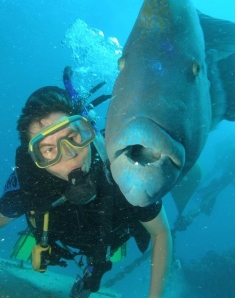
Kathy scuba diving with a grouper on the Great Barrier Reef. Photo: Oak Beach Productions, Port Douglas, Australia
Undara and the Great Barrier Reef
When Mount Undara erupted the lava radiating from the mountain flowed like molasses. The outer surface of the flows cooled forming a crust, and hotter liquids continued to flow underneath the crust, “like water in a hose.” When all the lava had flowed through, tunnels remained. Kathy and Joel walked throughout the lava tubes, which can flood during rainstorms.
The tour, and talk, ended with a diving session on the Great Barrier Reef. We saw cleaner shrimps, goby, lionfish, Moorish idol, humphead wrasse, leaf scorpionfish, seahorses and clown fish hiding among the magnificent fan, stony, zoanthid and soft corals. Sea turtles passed overhead and grouper said hello, before Kathy bid members good night.

